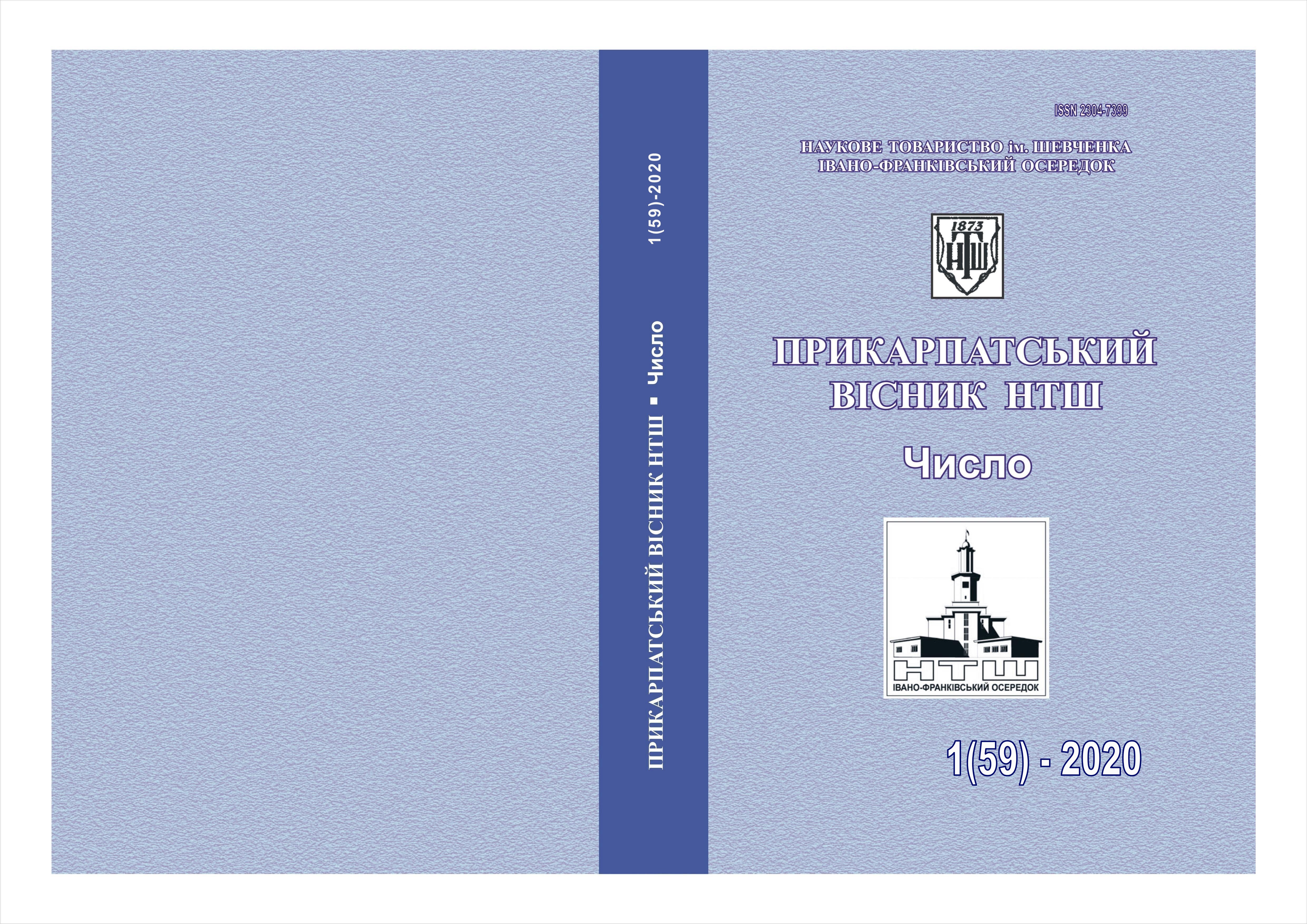MODEL REPRESENTATIONS OF THE MELTS STRUCTURE DESCRIPTION BY THE MODEL OF HARD SPHERES
DOI:
https://doi.org/10.31471/2304-7399-2020-1(59)-72-78Keywords:
model representation, optimization, oil and gas complex, model of rigid spheres, melt, liquid structure description.Abstract
In the article the optimization of the oil and gas enterprise, a complex process both from the technological and from the economic point of view is investigated. It is noted that today the development of methods of mathematical modeling of physical processes, for example, in oil fields on the basis of theoretical research and modern computer technology is absolutely relevant
One of the ways is to create new or improve existing mathematical models of processes occurring in oil and gas reservoirs, and calculate on their basis the characteristics of the process that optimize production. From this perspective, the study appears particularly relevant liquids in a narrow, purely physical and chemical aspects – namely melt.
Various fluid models have been proposed to describe the equilibrium and kinetic properties of liquids (melts), as well as to interpret experimental results. Model representations are also used in solving integrodifferential equations that relate distribution functions to interaction potentials. It is noted that integrodifferential equations are a powerful mathematical algorithm for describing inhomogeneous dynamic models, but they depend directly on the efficiency of software that implements the proposed models.
The model of hard spheres as simple fluid model proposed use. The reasons that allow you to choose this model as optimal were defined. Namely: the presence of analytical expression for the structural factor; application to describe the electronic and atomic properties of melts. The optimal methods for obtaining optimal values for the theoretical calculation of the structural factor of the proposed model were determined.
As a result of the analysis of existence of correspondence between the calculated and experimental structural factors it is established. This led to the conclusion that the possibility of applying the model of rigid to calculate the equilibrium and kinetic properties of melts exists. It is determined that the model of rigid spheres could be used as an approximation to describe the structure of both one-component and multicomponential melts (liquids).
References
Дутчак Я.И. Рентгенография жидких металов. Львов, «Вища шко-ла», 1977, 162 с.
Влияние обработки расплава в МГД-установке и интенсивной пластической деформации на структуру и свойства силуминов [ А. Л. Бе-резина, Т. А. Монастырская, В. И. Давиденко и др. Металлофизика и новейшие технологии. – 2009. – Т. 31, № 10. – С. 1417-1426.
Крокстан К. Физика жидкого состояния. Статистическое введение. М: «Мир», 1978, 400с.
І.І.Адаменко, Л.А.Булавін. Фізика рідин та рідинних систем. Київ АСМІ 2006, 535с. ISBN 966-7653-32-3.
Моот Н., Девис Е. Електронние процеси в некристалических веществах. М., «Мир», 1972, 472с.
Bush G., Guntherodt H.Y. Electronic properties of liquid metals and alloys. Soid State Phys. Vol.29. New-Yarc-London, 1974. P. 235-313.
Хейне В., Коен М. Уейр Д. Теория псевдопотенциалов. М: «Мир», 1973, 557с.
Zaitsevskii A.V., Van Wüllen C., Titov V. Russian Chemical Reviews. 2009. Т. 78. № 12. С. 1173-1181. Relativistic pseudopotential model for superheav elements: applications to chemistry of eka-hg and eka-pb.
Крисько О.В., Крисько О.В., Скоробогатова Т.В. Расчет температур-ной части электросопротивления алюминия с помощью гладкого нелокального модельного потенциала (ГНМП) простых металлов. Современные проблемы науки и образования. 2014, № 6.
Харрисон У. Псевдопотенциали в теории металов. М.: «Мир», 1978. 366с.
Jin, C., Zhang, J., Li, X., Yang, X., Li, J., & Liu, J. (2013). Injectable 3-D fabrication of medical electronics at the target biological tissues. Scientific Reports, 3(6163), 3442.
Kim, D., & Lee, J. B. (2015). Magnetic-field-induced liquid metal droplet manipulation. Journal of the Korean Physical Society, 66(2), 282-286.
Tan, S. C., Yuan, B., & Liu, J. (2015). Electrical method to control the running direction and speed of self-powered tiny liquid metal motors. Proceedings of the Royal Society A Mathematical Physical & Engineering Sciences, 471(2183), 32-38.


